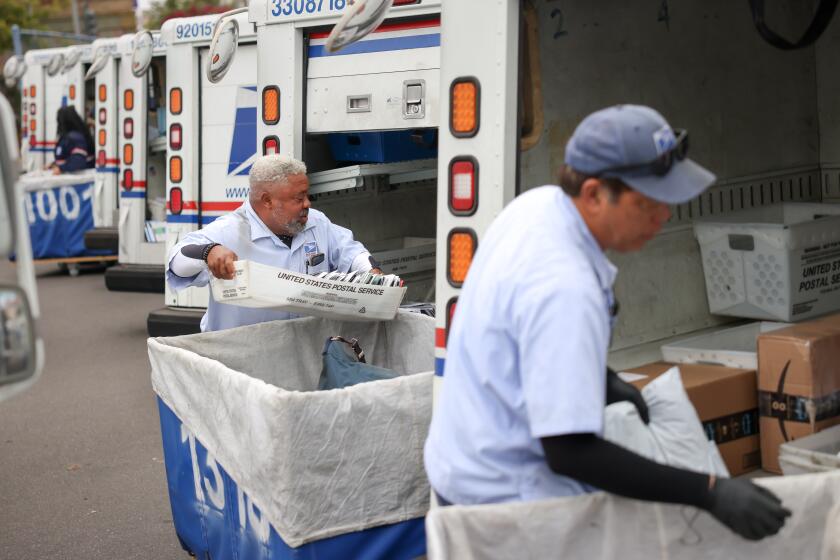Air Quality Plan Needs Fast and Effective Doctoring
- Share via
One of the few certainties in the world of air quality management is the abiding level of uncertainty. In making decisions about pollution-control regulations, planners turn to statistical models that change as the assumptions built into them change. And the regulations themselves can have unanticipated effects on air quality, depending on the level of enforcement, the extent of voluntary compliance and, of course, the accuracy of the models. It’s enough to make your eyes smart.
These uncertainties notwithstanding, officials at the South Coast Air Quality Management District have caused serious public questions to arise recently about their determination to solve Southern California’s smog problem. Last month, the AQMD, which regulates stationary sources of pollution such as factories and shopping centers, asserted that proposals for cutting ozone, the main ingredient of smog, would also reduce airborne particulates enough to meet current federal requirements for the Los Angeles Basin. Particulates are microscopic particles spewed from diesel trucks, cars, dusty roads and fields, power plants and other sources. They can lodge in human lungs and aggravate heart disease and, according to recent studies, may be responsible for the deaths of up to 64,000 Americans annually, including nearly 6,000 in the L.A. area.
The AQMD’s new draft plan details 61 measures that the agency’s staff recommends to meet federal clean air goals by the year 2010. The plan targets businesses that use oil-based cleaning solvents, adhesives and paints--places like auto shops, machine shops and printers as well as some electronics firms. In adopting its plan, the agency abandoned some socially unpopular proposals, including requirements for car-pooling to schools, shopping centers, arenas and other large gathering places.
News of this unexpected “twofer”--that the proposed ozone regulations would also solve the particulate problem--understandably was greeted with skepticism outside the agency. Designing regulations to effectively control particulates is a difficult scientific problem. To top it with insistence that the public change its travel habits may have been pushing the possibilities too far.
Skepticism about AQMD proposals only deepened with the abrupt resignation of nine of the district’s 11 long-time scientific advisors early this month. The scientists said the AQMD’s new plan would not produce the necessary air quality improvements and was drafted without their input. Apart from the snub to these respected scientists, the new ozone/particulates plan testifies to the AQMD’s predicament, caught between the rock of federal clean air requirements and the hard place of opposition by business and many state and local lawmakers to tougher regulatory measures.
But ducking won’t solve the problem. Early next year state air officials must submit to federal regulators the California plan to control particulates. The newly announced AQMD measures, together with those from other air districts, will constitute that plan. Many state officials now worry that the AQMD proposal will not pass muster with the feds.
Add to this situation the plans by the U.S. Environmental Protection Agency to draft a new, tougher federal standard for particulates in November. If the current AQMD plan does not meet the existing federal standard, as many believe, it surely will fail to meet the coming rule.
The AQMD should begin now to remedy the deficiencies in its proposed plan. But the responsibility is not the agency’s alone. Politicians have used the agency as a whipping boy, legislatively tying its hands and stoking its opponents. They have an obligation now to assist the agency to define and defend effective solutions to clean up what remains the dirtiest air in the nation. Some of those solutions may be unpopular. Failure by the AQMD and other state air quality planners to do so, a failure that would constitute a violation of federal law, would jeopardize not only federal highway funding and other assistance but would continue to put L.A. Basin residents at higher risk for asthma and other serious health problems.
More to Read
Sign up for Essential California
The most important California stories and recommendations in your inbox every morning.
You may occasionally receive promotional content from the Los Angeles Times.










